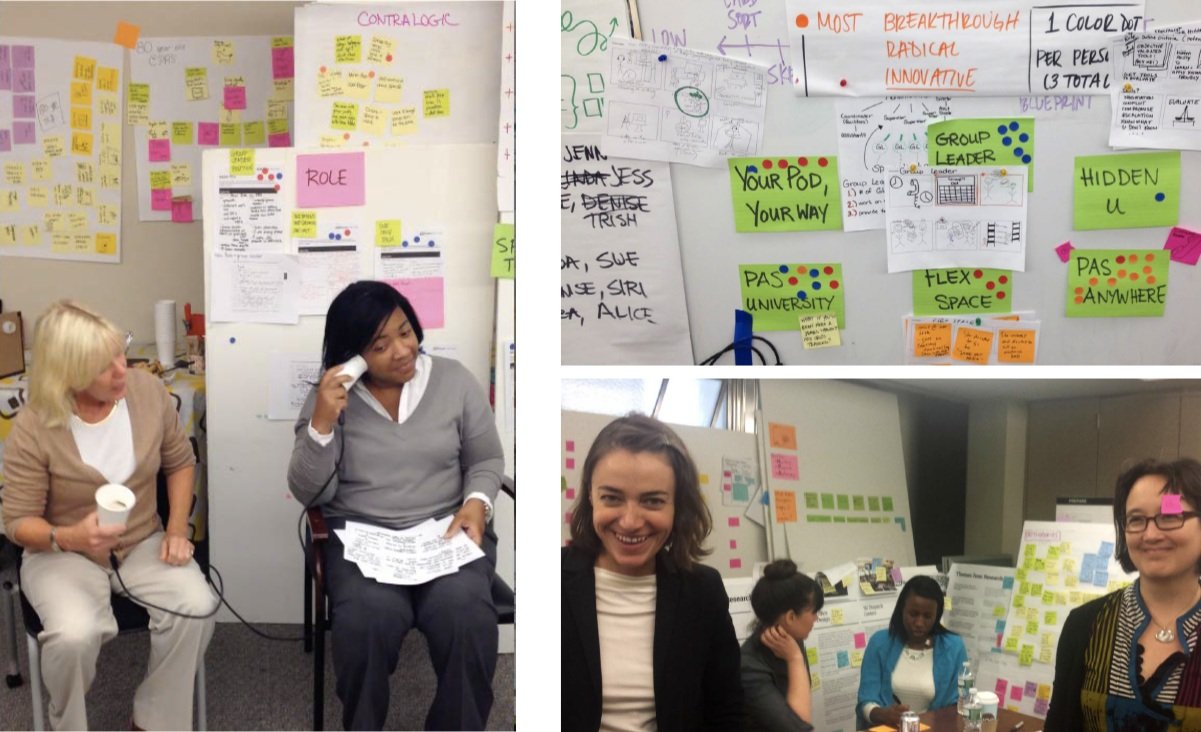






Reimagining the Healthcare Call Center Experience
Peer Insight | Memorial Sloan Kettering Cancer Center
Download the full case study presentation here: MSKCC Call Center Case Study
Challenge
A world-renowned cancer center wanted to re-envision the patient’s first touchpoint with the hospital: the appointment scheduling process. However, with increasing employee turnover and decreasing job satisfaction, the patient experience could not be improved until we focused on improving the experience of an internal group, PAS, or Patient Access Services, who were responsible for scheduling initial patient appointments. We were asked to design and test employee-centered service interventions that would improve the quality of life for their PAS employees.
Note: This case study focuses on phase two of a larger project that included ethnographic research and a tactical assessment of the appointment scheduling process at MSK to identify opportunities for co-creation and service pilots.
Approach
Coming out of an earlier phase of ethnographic research, the project focused on two of eight opportunity areas: (1) realign roles and responsibilities to support department needs and (2) explore space and technology options that improve well-being. The 12-week project included exploratory research, concept development, prototyping & testing, and recommendations.
Knowing successful implementation would hinge on the use of participatory design, we developed a stakeholder engagement strategy that included defined roles and responsibilities and scheduled weekly or bi-weekly check-in meetings. Stakeholders included PAS call center employees with varying roles and seniority, call center leadership, hospital leadership, and corporate innovation team members.
Our stakeholder team worked with us to complete research and concept development activities such as:
In-context interviews with stakeholders both internal and external to the PAS team - including empathy exercises
A two-day ideation session that included research review, ideation, rapid prototyping and testing
Concept evaluation and prioritization
After the workshop, we fine-tuned them into four distinct alternatives, two for each opportunity area, and identified assumptions to test for each. We then designed in-market experiments and created prototypes to test our assumptions quickly and inexpensively.
We executed two rounds of remote, live experimentation with PAS staff, engaging them in 2D and 3D prototypes and experiences. Between each round of live testing, we tracked our observed and collected data against our assumptions and iterated our tests and prototypes.
Outcomes
Post-live experimentation, we analyzed the collected data against our identified riskiest assumptions to both understand what was resonating with PAS employees and which concepts were the most viable and feasible.
Based on the results of that analysis we created recommendations on how to proceed with a higher-fidelity pilot of the proposed service and experience improvements.
Held a Pivot-or-Persevere meeting which included hands-on activities that leveraged the test results and research findings and was designed to stimulate open conversations and alignment amongst our group of multi-disciplinary stakeholders.
The project was handed off to the internal innovation team at the Memorial Sloan Kettering for continued exploration and implementation some of the identified quick wins.



